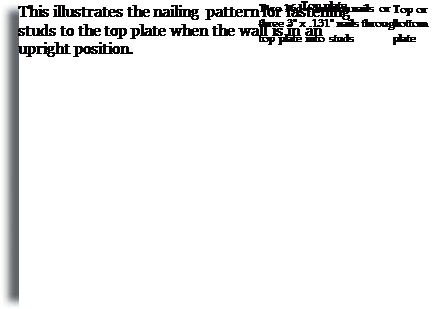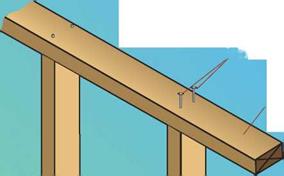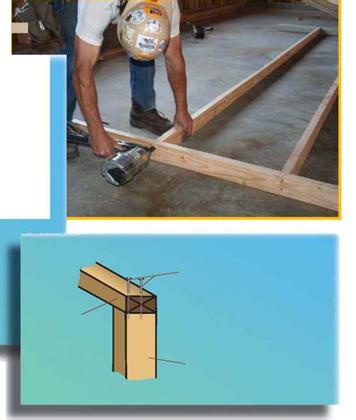PATTERNS
If you are framing every day, the nailing patterns in this chapter will soon become second nature.
For the part-time framer, they can serve as a quick reference.
Building codes and generally accepted practices were followed in developing the nailing patterns in this chapter. When the plans call for other nailing patterns, however, be sure to follow them.
You will notice in this chapter that there are different nails specified for the same nailing. There are many different styles of nails. The five most frequently used categories are:
• Common nails
• Box nails
• Sinker nails
• Gun nails
• Positive placement nails
You will see a 3” x.131” nail specified frequently. This nail is the most common P-nail, or pneumatic gun nail, used.
The common nails are listed because they are typically specified by building codes. Most of the tests that are done to determine the strength needed use common nails. Box nails and sinker nails are listed because they are easier to nail, and less likely to split the wood. They are also commonly found at nail suppliers. The gun nails are listed because nail guns are used most often. Positive placement nails are made specially for nailing on hardware. They only work in positive placement nail guns.
Please note that common nails are listed with “common" written after the size. If the nail size has “common" after it, you can only use common nails. If it does not, you can use either common, box, or sinker nails.
The International Residential Code (IRC) is similar to the International Building Code (IBC) except it only covers one – and two-family dwellings. The patterns in this chapter are based on the 2009 IBC, which, in some cases, requires larger nails than the 2009 IRC.
 |
|








Leave a reply